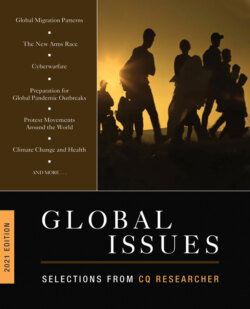Читать книгу Global Issues 2021 Edition - Группа авторов - Страница 30
Background Repeated Invasions
ОглавлениеThe United States has never fully understood modern Iran, neither as a monarchy nor as the Islamic Republic. The most glaring example is the unquestioning faith that successive U.S. administrations placed in the durability of the Iranian monarchy and its role as America’s policeman in the Middle East.
In December 1977, President Jimmy Carter memorably praised Iran as “an island of stability” in the turbulent region. Within days the first demonstrations erupted in what became a revolution that eventually would end the monarchy, send Shah Mohammad Reza Pahlavi into exile and transform Iran into the virulently anti-American Islamic Republic.
Iran scholars rank the Iranian revolution as one of the three most consequential events in the Middle East during the 20th century, the other two being the collapse of the 500-year-old Ottoman Empire after World War I and the creation of Israel in 1948. And like those events, the shock waves from Iran’s revolution continue to reverberate across the globe.
“Virtually no part of the world has been untouched by the revolution’s repercussions because of its effect on oil prices, on the patterns of terrorism and modern warfare, on Third World politics and on the emergence of religious fundamentalism, not only within Islam,” wrote Robin Wright in her 1989 book on post-revolutionary Iran, In The Name of God: The Khomeini Decade.25
Today, 40 years after the revolution, the crisis over the Islamic Republic’s nuclear program, its ballistic missile development and its push for Middle East dominance underscore the revolution’s enduring impact and Iran’s geostrategic importance.
For Iranians, however, that is nothing new. Since ancient times, Iran—a geographic and cultural bridge between the Middle East and India—has been central to the military, religious and cultural history of the region. Many scholars say modern Iran’s deep suspicion of outsiders is the legacy of centuries of repeated foreign invasions and meddling in its internal affairs.
That history began in the fourth century B.C. when the Persian Empire, Iran’s predecessor, stretched from modern day Bulgaria in the west to northern India in the east and Egypt in the south. Alexander the Great conquered Persia as he drove his armies east to India. In the seventh century A.D., the Arab conquest of Persia opened the way for the spread of Islam to Central and East Asia.26 The Turks overran Persia in the 11th century, followed by Genghis Khan’s Mongol army in the 13th century and Tamerlane in the 14th century.
In the 16th century, Persia’s Safavid monarch, Ismail, claimed to be a direct descendent of the Prophet Muhammad’s cousin, Ali, and declared Shiism the country’s official religion. It was a transformative move that gave Persians a separate religious identity from their mostly Sunni Arab neighbors.27
Since then, Persians established close clerical bonds with Shiite communities in Lebanon, Syria and Iraq—a relationship that has helped the modern Islamic Republic enlist them as proxies in its struggle against rival powers.
